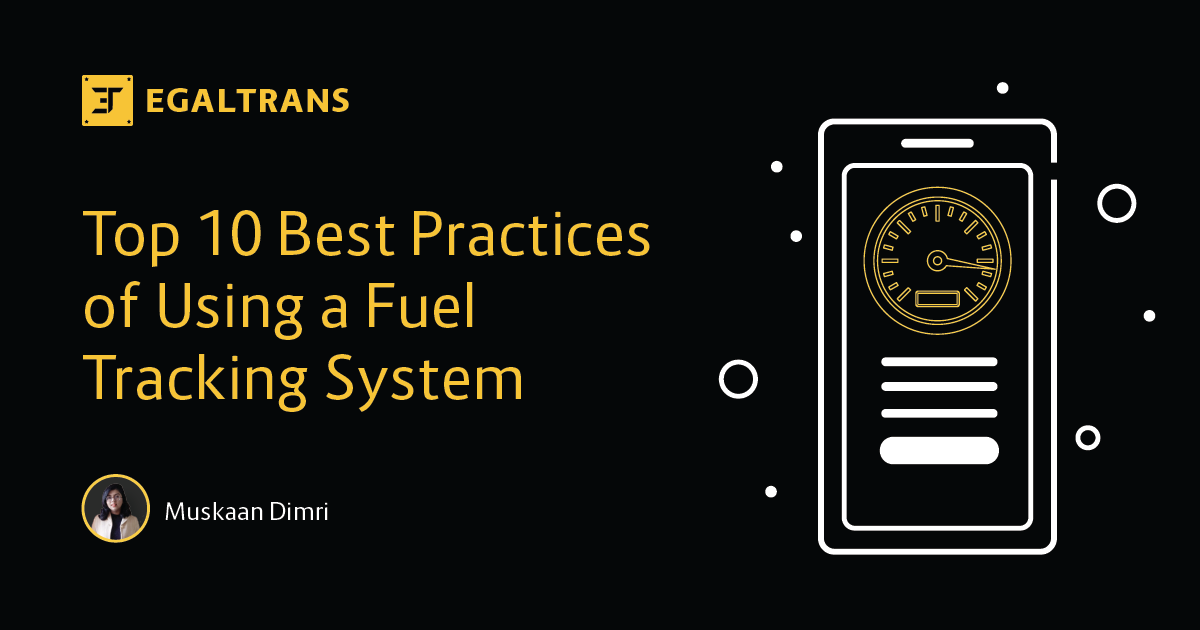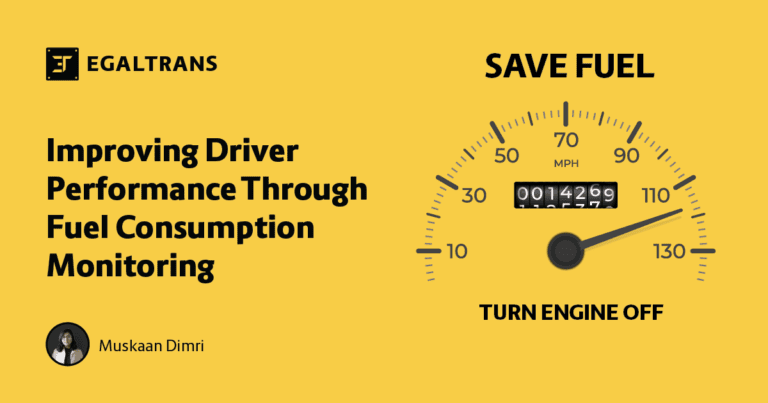Fuel is one of the most widely-used sources of energy in the world today, thus the need to manage or save it becomes very important for the future generation. Fuel constitutes more than half of the cost of operating a truck. Fuel tracking is the process of controlling and tracing fuel usage and its cost. Fleet owners have been managing fuel for many years. Although the techniques have become modernized, the foundation remains the same.
Modern Fuel Tracking Methods
With the onset of the computer era, fleet managers started using computers to maintain spreadsheets, fuel data, driver data, etc. This made work a lot more easier and efficient. While sitting in their office or warehouse the fuel manager can access the reports to understand the behavior and can access the real-time location of the driver. Giving them full access to the dashboard helps in reallocating resources and handling major operations via the fleet management software. Various new technologies and equipment such as fuel sensors, GPS tracking, and many others have revolutionized the system of fuel tracking.
Top Best Practices for Using a Fuel Tracking System
1. Fuel Cost Monitoring
With the ever-rising rates of fuel, if you don’t track fuel cost, it can put a hole in your pocket. Fuel tracking helps in the analysis of fuel costs and finding economical fuel brand options that provide better efficiency to their vehicle. This will not only increase the fleet performance but also decrease the overall expenditure on the trucks as fuel accounts for about 50% of the overall fleet cost.
2. Monitor Idling using GPS
According to the Environmental Defense Fund an idling truck uses approximately one gallon of fuel per hour. GPS tracking provides truck owners with detailed reports on how long the vehicle is idle, its location, and the driver’s name. This will improve operational efficiency and increase fuel economy among fleet vehicles.
3. Influence Driver’s Behavior
As fuel monitoring devices give accurate data, this information can be used to influence truck drivers’ behavior. The driver can be appreciated or given incentives for their fuel-saving methods. Drivers who do not meet expectations or are found to have unnecessary speeding, harsh braking, and excessive engine idling, can be given training to improve the productivity of the fleet. This will promote a good work culture and will also help the drivers to believe that they are trusted.
4. GPS Tracking for Route Optimization
Route optimization helps to reduce fuel costs by 30%. Route optimization takes account of different factors like traffic, delivery windows, stops on the route, etc. As it is difficult to take a record of all this manually many route optimizations have been available for more efficiency of the fleet. Truck owners can also track the whereabouts of their vehicles via this professional software.
5. Track and Manage Fuel Transaction
Fuel tank monitoring helps to diagnose any fuel leaks or spills in the tanks. This is done with the help of fuel sensors which are placed in the tank and in any case of fuel spillage it notifies the control panel and the fleet owner to act upon it to avoid any further fuel loss. This data can also be provided to fleet maintenance staff, so they can fix them on their next routine check

6. Integrating Fuel Data with Fuel Cards
Fuel cards allow drivers to pay for the fuel at regular gas stations. There are several benefits attached to the fuel cards such as no credit card fees, wholesale price, no administrative fees, and many others. Integrating fuel management software with fuel cards will enable large fleet owners to have all the information starting from fuel location, budget fleet expenses, and identify purchasing anomalies and card misuse.
7. Install Flow Meters and Sensors
Installation of fuel sensors and meters enables fleet owners to have all the fuel data whether it is the refuel & drain location, or the sudden drop in the tank fuel. Whenever fuel loss takes place, the system will alert the fleet manager and the driver. Besides, the fluctuations in fuel consumption can show idle time and be used in driver behavior analytics.
8. Reduce Risk of Fuel Pilferage
Fuel wastage is a common problem rampant in the transportation business, especially trucking. Fuel tracking systems coupled with anti-siphoning tools alert fleet owners about fuel spilling. GPS-based fuel monitoring helps to reduce such wastage by capturing the fuel level data via the sensor by data processing and sending instant alerts to fleet operators.
9. Incorporate a Telematic System of Management
Fleet owners nowadays are investing more in software and telematic systems to get more accurate data on their fuel. A telematics platform gives fleet managers in-depth insight into fuel consumption. Odometer sensors or GPS devices can be integrated to get data from machines rather than drivers and eliminate mistakes.
10. Preventative Maintenance
Many mechanical issues can impact fuel consumption, including the amount of fuel used, mileage, the quality and safety rating of your engines, the cost of fuel, and repair services. Maintaining your trucks once in a while will not only reduce the surprise breakdown of different parts but also ensure they are well maintained so that their efficiency is maintained and lesser fuel is required during the journey. A maintenance checklist can be made to ensure that no step is missed in the routine.
Fuel being the major cost of a fleet, its improper measurements may lead to trust gaps between owners and drivers. The distrust hampers business and also leads to quarrels and fights. The fleet owner might not believe in the driver’s work, but the fuel management system helps in providing accurate data directly to the owner without engaging the truck driver in the middle. It not only increases the efficiency of the fleet but also promotes a healthy and positive work environment which is the foundation for a successful business.
Hence, Efficient fuel monitoring systems are an absolute necessity for businesses and carriers. As fuel prices soar to new highs, businesses are being forced to rethink their operational strategies to minimize consumption and maximize efficiency. A fuel monitoring system is the best tool for managing fuel efficiency. It is the best investment, especially for a fleet owner to streamline business operations timely.






